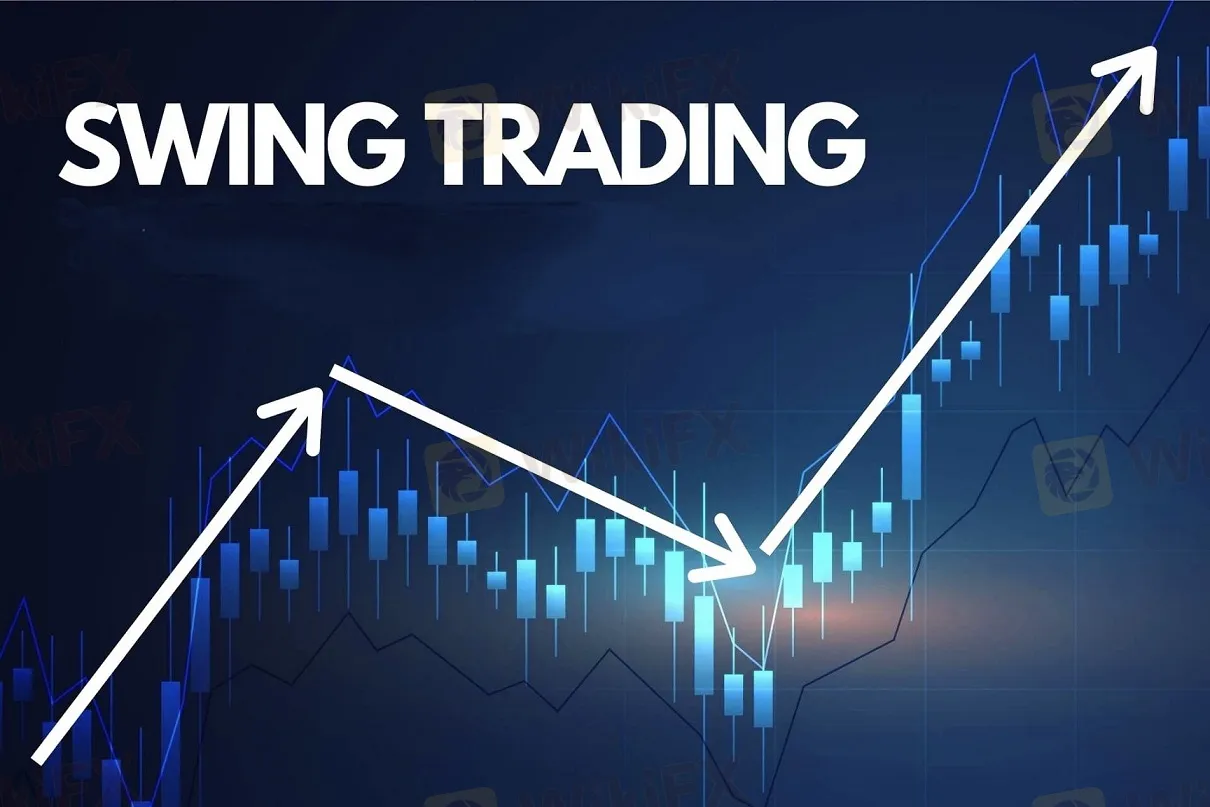Abstract:Swing Trading is a mid-term trading strategy that aims to capture the short to medium-term fluctuations in asset prices within a trend.

In the rapidly changing financial markets, investors are constantly seeking flexible strategies to adapt to the market and achieve substantial returns. Swing trading, as a unique and popular trading strategy, is attracting the attention of an increasing number of investors. This article will delve into the fundamental principles of swing trading, key strategies, and essential elements for successfully implementing this strategy. Whether you are a beginner or an experienced trader, understanding the core concepts of swing trading will provide robust support for your success in the ever-evolving financial environment.
Definition
Swing trading is a short to medium-term trading strategy that aims to capture the mid-term fluctuations in asset prices within a trend. The basic idea is to trade between the low and high points of price fluctuations, capturing a significant portion of potential price movements. It's important to note that swing traders do not blindly chase after the entire upward movement of a phase (which is indeed unlikely), but rather aim to capture a part of the expected price trend and then move on to the next opportunity.
This strategy style falls between day trading and trend trading, with holding periods ranging from overnight to several weeks. Swing traders typically use technical analysis tools such as chart patterns, trendlines, and technical indicators to assist them in assessing market trends and potential entry and exit points. Compared to trend investors, swing traders focus more on short-term price fluctuations, while compared to day traders, they hold positions for a longer duration.
The advantage of this trading strategy is that it can avoid the noise in day trading and is relatively less affected by market fluctuations in long-term investments. Swing trading may be an attractive strategy for investors who wish to trade more frequently but are unwilling to take on the high risk associated with day trading.
How Swing Trading Works
Selecting Trading Instruments
Traders begin by choosing financial instruments such as stocks, forex, or futures. Liquidity and volatility are crucial factors in selecting assets. Ideal swing trading targets are assets with high liquidity and volatility, such as large-cap stocks.
Analyzing Long-Term Market Trends
Financial markets generally exhibit three main long-term trends: bearish, bullish, or neutral. Swing trading is most suitable for market conditions between bull and bear markets, as neutral markets involve two-way price fluctuations that are harder to predict. Swing traders use technical and fundamental analyses to assess short to medium-term directional movements.
Analyzing Short to Medium-Term Trends of Targeted Assets
Focusing on short to medium-term fluctuations, swing traders typically use short-term charts like daily or 4-hour charts. Utilizing indicators such as Relative Strength Index (RSI), Moving Average Convergence Divergence (MACD), Fibonacci retracement, volume, and trendlines, they identify potential trends, support and resistance levels, and other technical indicators for informed decision-making.
Setting Up a Trading Plan
Based on market analysis, traders develop a trading plan, which can be categorized into trend-following or trend-reversal strategies. The plan includes entry points, stop-loss points, and profit targets. Entry points are often chosen at price reversals or breakthroughs of support/resistance levels, while stop-loss and profit targets are critical for risk control and profit-taking.
Executing Trades
Once the trading plan is in place, traders execute trades, involving order placement, setting stop-loss and take-profit orders, etc. Disciplined execution is essential, adhering to the pre-established plan.
Monitoring Trades
While swing trading doesn't require constant monitoring, periodic trade checks are necessary. This includes daily chart reviews and adjustments to the trading plan when market conditions or new information arise.
Adjusting Trading Plans
If market conditions change or initial analyses deviate, traders may need to adjust their trading plans. This could involve modifying stop-loss and take-profit levels or even closing positions early.
Discipline and Risk Management
Swing traders must maintain discipline, avoiding emotional influences from the market. Strict adherence to risk management rules ensures that each trade's risk remains within acceptable limits.
Real-Time Learning and Optimization
Swing trading is a continuous learning and optimization process. Traders should review and analyze each trade's successes and failures, consistently improving their trading strategies.
The Pros and Cons
FAQs
What is a swing in the trading system?
A swing is an up or down movement that is big enough to bring a new price level. It is not a trend but rather a movement in a trend.
Is swing trading profitable?
Swing trading can be profitable, but success depends on market conditions, individual skills, risk management, and discipline. No trading strategy guarantees profits; successful swing trading requires a deep understanding of the market and effective risk management.
Is swing trading good for beginners?
Swing trading may be complex for beginners, requiring high levels of technical analysis, market insight, and risk management. It's recommended for beginners to master fundamental knowledge and choose more robust trading strategies.
What is the 1% rule in swing trading?
The 1% risk rule means that the risk per trade should not exceed 1% of the account capital. This doesn't imply investing only 1% of the capital; you can invest as much as possible. However, if the trade loss exceeds 1% of your total capital, it should be closed.
Bottom Line
In general, swing trading is a trading strategy aimed at capturing mid-term market fluctuations. This approach is relatively independent of economic cycles, allowing for trading opportunities in different market conditions. By combining technical and fundamental analysis, swing trading seeks to maximize short-term profit potential. Compared to day trading, it requires less trading time, has lower costs, and doesn't demand continuous monitoring. However, swing trading also presents challenges, including the potential for false signals due to market noise and the requirement for high-level technical analysis and market insight. Effective risk management and discipline are crucial for the success of swing trading.












